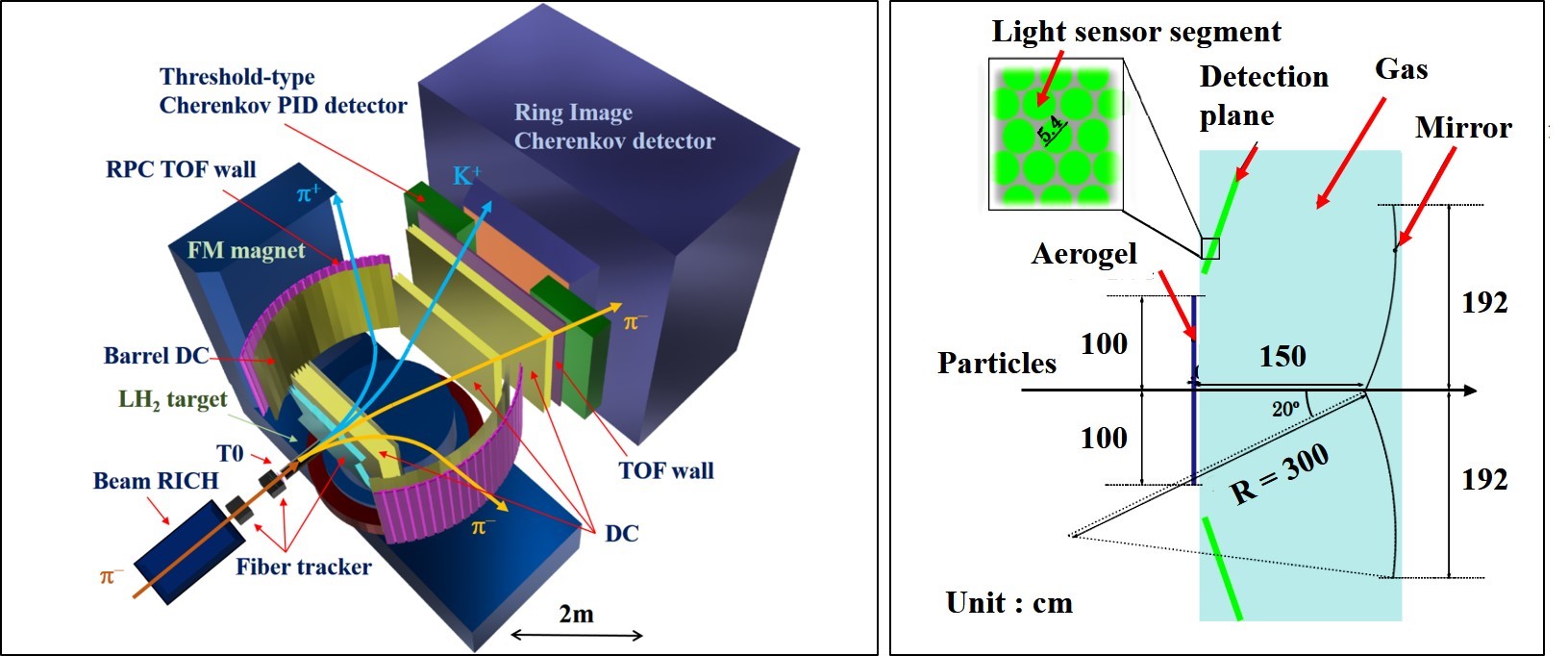| Program D01-6 | Development of a particle identification detector for measuring high-momentum hadron beam reactions |
|---|---|
| Principal Investigator | SHIROTORI, Kotaro (Osaka University) |
At the J-PARC hadron experimental facility, hadron particle beams
such as pions, kaons and anti-protons can be provided as secondary
beams. The J-PARC high-momentum beam line which can provide 30-GeV
proton beam had been constructed with a successful extraction of the
primary proton beam in 2020. In addition, the J-PARC high-momentum
beam line is also designed to provide secondary beams with up to
20 GeV/c by installing a production target at the extraction
point. Hadron beams with up to 20 GeV/c which are not available in
the world give us unique opportunities to effectively produce hadrons
with a charm quark and multiple strange quarks. By using hadron beams
with 2–20 GeV/c from the J-PARC high-momentum beam line,
we can get
new chances to perform various experiments of hadron and nuclear
physics while precent beam lines in the J-PARC hadron experimental
facility can only provide hadron beams with up to
2 GeV/c. Therefore,
cutting edge studies of charm and multi-strangeness hadrons can be
opened at the J-PARC facility. The main project at the J-PARC
high-momentum beam line is the charmed baryon spectroscopy
experiment. In the experiment, we aim to investigate motions and
correlations of quarks in the internal structure of hadrons which
cannot directly be observed due to the quark confinement. The light
quark pair correlation called the diquark correlation which is
expected to be a new effective degree of freedoms can be established
by the spectroscopic studies of charmed baryons.
We are constructing a large acceptance spectrometer for the charmed
baryon spectroscopy experiment. Specifications of the spectrometer
are suitable for the general purpose so that various experimental
ideas of hadron and hypernuclear physics were proposed. Thus, the
spectrometer is being constructed not only for the experimental setup
of the charmed baryon spectroscopy but also the general-purpose
experimental platform at the J-PARC high-momentum beam line. One of
the most important particle identification detectors of the
general-purpose spectrometer is a Ring Image CHerenkov detector
(RICH). The RICH is designed to be capable to identify scattered
particles from hadron reactions with a momentum-range of
2–17 GeV/c. For measuring the wide-momentum range
of scattered particles,
we combine to use two Cherenkov radiations such as Silica aerogel and
Freon gas. RICH is designed as Hybrid type one. Micro-Pixel Photon
Counter (MPPC) is planned to be used as a light sensor due to the
leakage of the magnetic field from the spectrometer magnet. For
compensating a small size of MPPC, a light guide/condenser will be
developed. Although MPPC is not familiar to be used for RICH due to a
small size and a large dark current rate, we aim to introduce MPPC as
a new detector element for the RICH detector. The goal of the project
is to realize the RICH and its detection technique with MPPC for the
general-purpose spectrometer to perform various hadron and
hypernuclear experiments at the J-PARC high-momentum beam line.

Fig. 1. General-purpose spectrometry (left) and schematic
view of Ring Image Cherenkov detector (right).
Members
- Principal Investigator
-
SHIROTORI, Kotaro

(Research Center for Nuclear Physics (RCNP), Osaka University)
- Research Collaborators
-
NOUMI, Hiroyuki (Osaka University)
YAMAGA, Takumi (RIKEN)
NARUKI, Megumi (Kyoto University)
HONDA, Ryotaro (High Energy Accelerator Research Organization (KEK))
Reference Materials
-
H. Noumi et al. , J-PARC E50 Proposal (2012). -
K. Shirotori et al. , JPS Conf. Proc. 8, 022012 (2015). -
S. H. Kim ,A. Hosaka ,H. C. Kim ,H. Noumi ,K. Shirotori , Prog. Theor. Exp. Phys. 2014, 103D01 (2014). -
T. Yamaga et al. , Nucl. Instrum. Methods Phys. Res. A 766, 36–38 (2014). -
T. Yamaga et al. , ELPH Annual Report 2014 (Tohoku University), 83–88 (2014).
